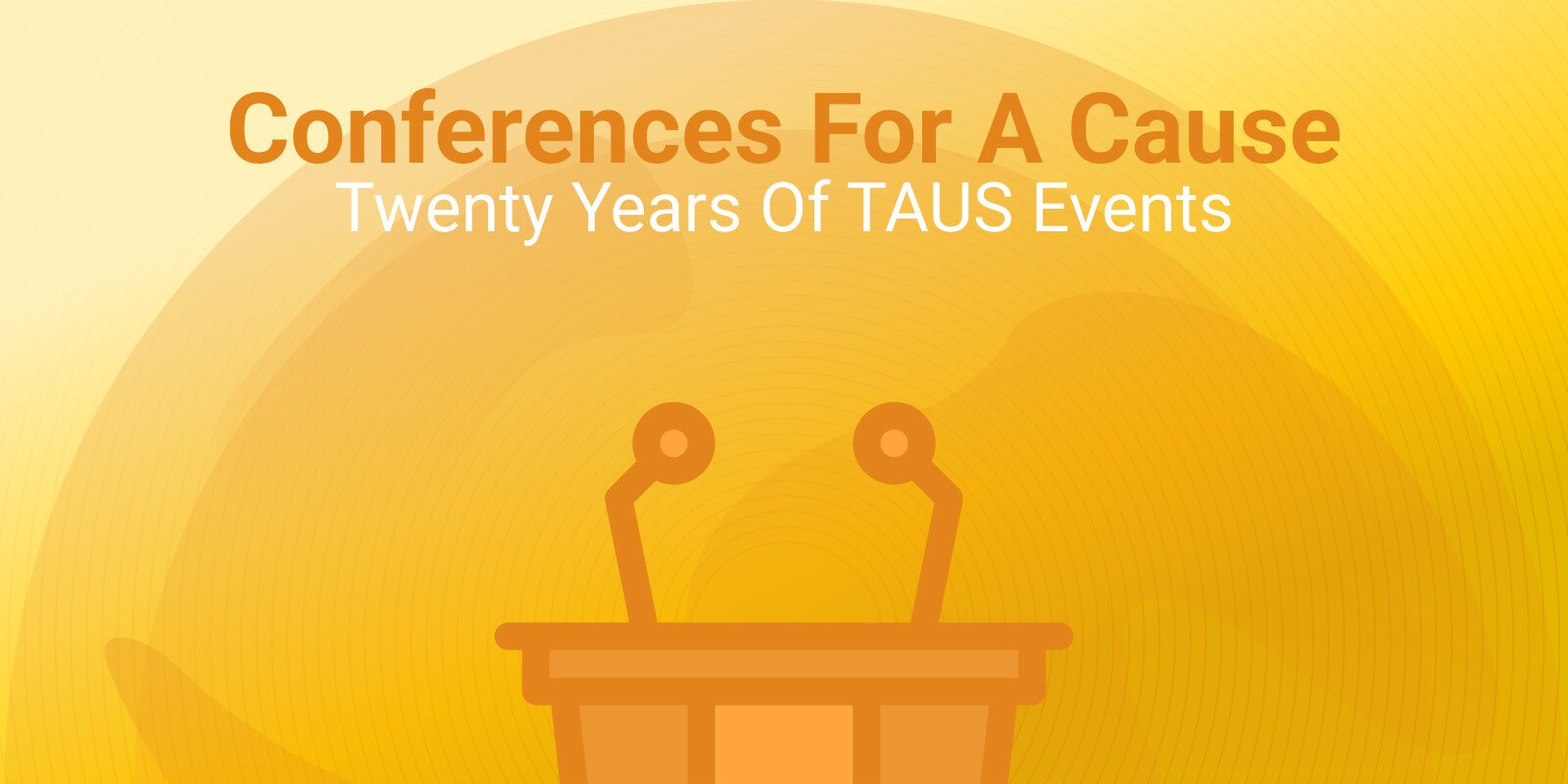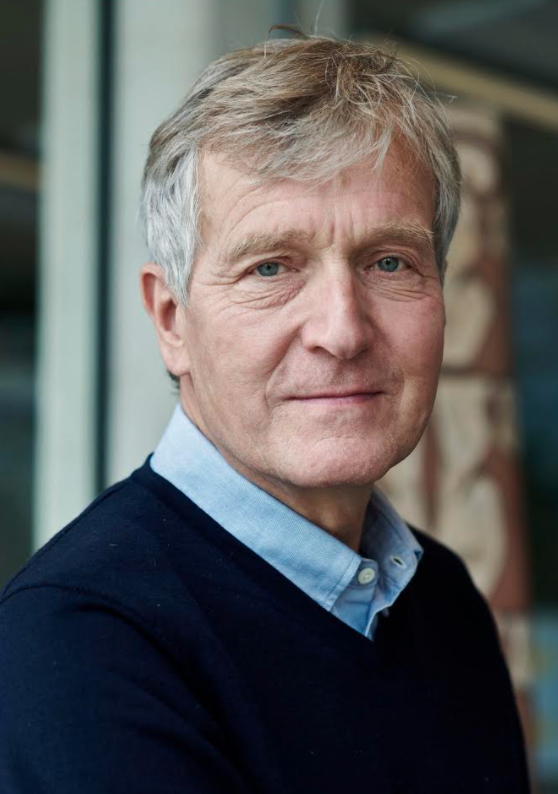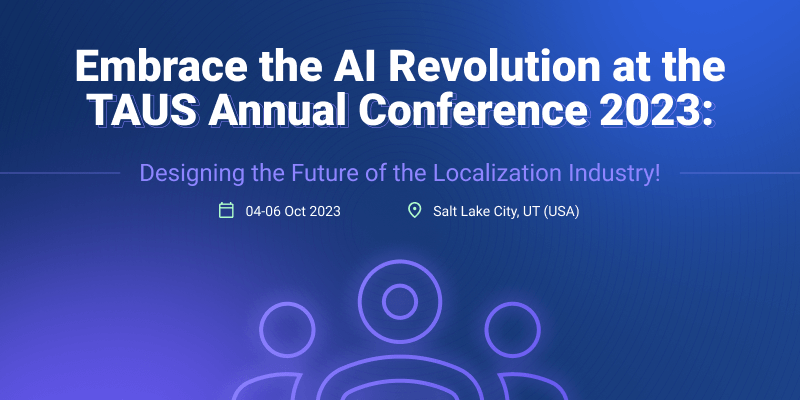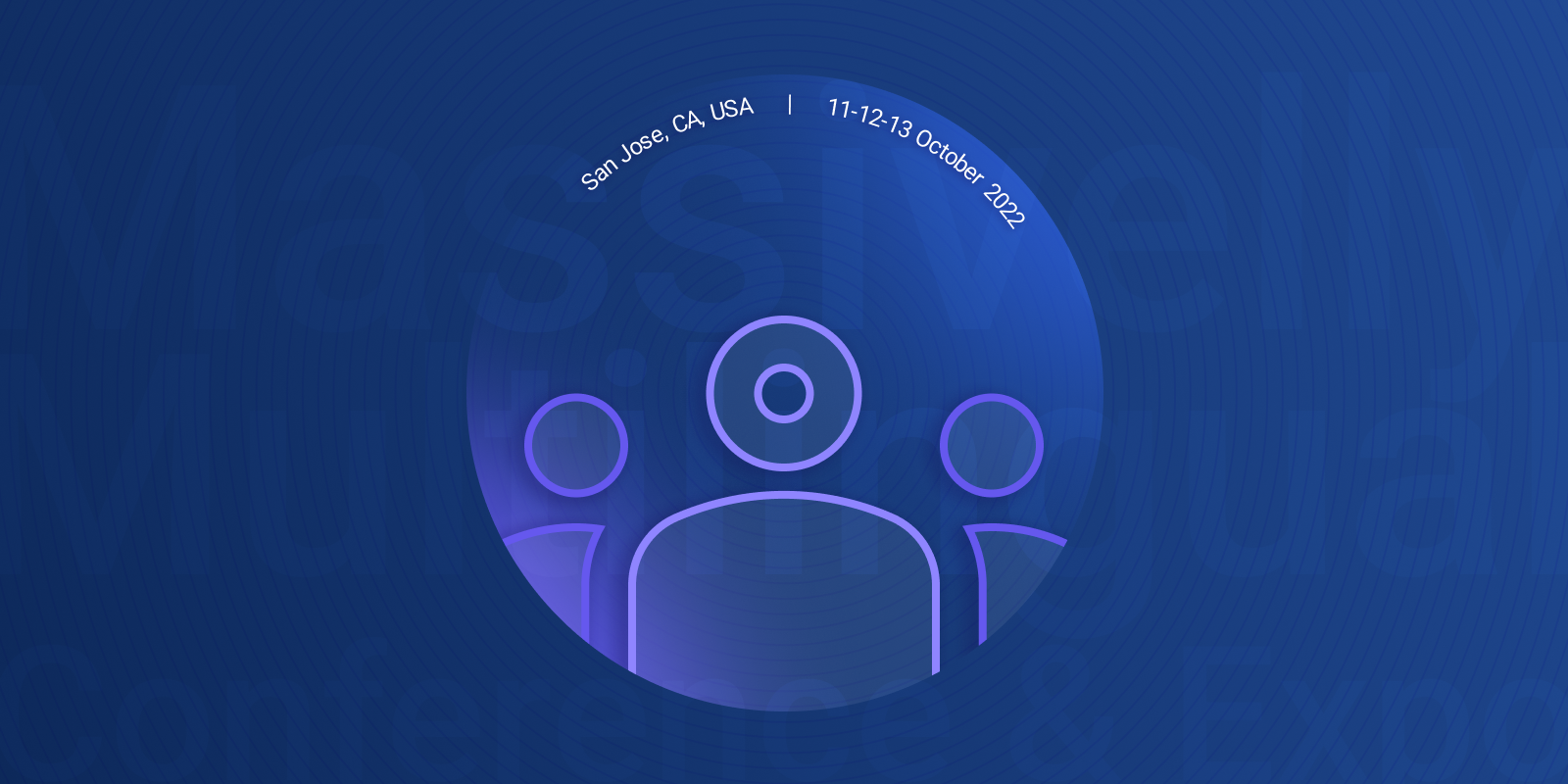Celebrating 5 years of QE Summits

We are getting ready for the 13th TAUS QE Summit. With all the knowledge and experience we’ve gathered over the past months, the topics on the agenda become more focused. Apart from learning more about the business intelligence you can get out of DQF and the Dashboard, we will also talk about the user experience and how to use DQF as a risk and expectation management tool.
In March 2013, TAUS organized their first Translation Quality Evaluation (QE) Summit in Dublin, Ireland, hosted by Microsoft. TAUS had been working on the development of the Dynamic Quality Framework (DQF) and the translation quality evaluation metrics system since 2012. It was time to put more focus on these endeavors by creating an event around it.
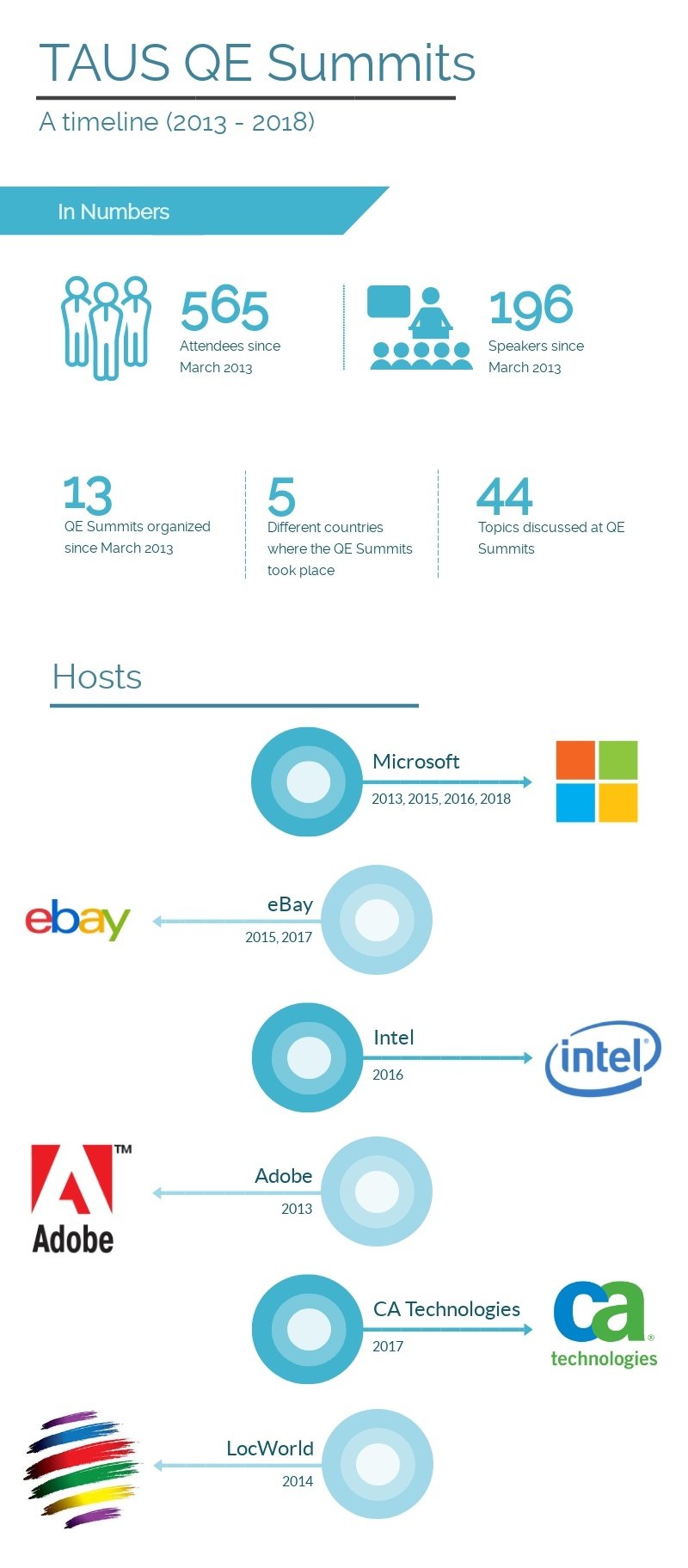 Microsoft was kind enough to host this first event on translation quality, where over 70 people came to attend and brainstorm about topics such as Matching Translation Quality Requirements to Quality Evaluation Models, Pricing MT Post- editing, Improving Automated Metrics, and Adequacy, Fluency and/or Readability Evaluation. Two more QE Summits followed that year, one in Beijing in cooperation with the Translators’ Association of China, and one in San Jose, CA, hosted by TAUS member from day one, Adobe.
Microsoft was kind enough to host this first event on translation quality, where over 70 people came to attend and brainstorm about topics such as Matching Translation Quality Requirements to Quality Evaluation Models, Pricing MT Post- editing, Improving Automated Metrics, and Adequacy, Fluency and/or Readability Evaluation. Two more QE Summits followed that year, one in Beijing in cooperation with the Translators’ Association of China, and one in San Jose, CA, hosted by TAUS member from day one, Adobe.
In the years that followed, two QE Summits per year were organized. One in the spring and one in the fall, each hosted by one of the TAUS member companies. Themes changed every year, starting in 2013 with the main objective of the summits, namely: Solving an industry problem. In 2014 it was all about minimalism and saving costs with the main theme: Quality Evaluation on a Shoestring. “Who cares about translation quality?” became the slogan in 2015, helping us to define the different roles and functions within the field of quality management.
“Partnering on Quality” was the main theme in 2016. It had been six months since TAUS released the Quality Dashboard and the focus was on analyzing use cases of members and partners integrating with and using the dashboard. In 2017, Reinventing Translation Quality became the theme, as the importance of agile quality management rose and do’s and don’ts in quality management needed to be laid out. Earlier this year, Decentralizing Translation Quality Evaluation became the theme of the QE Summit at Microsoft, focusing on the DQF’s potential to decentralize and automate the transactional and administrative activities surrounding quality evaluation while ensuring security and trust.
Now it is summer 2018, the Quality Dashboard has been in use by several companies over the past year and we’ve just passed the “100 million words flowing through the system” milestone. Furthermore, the DQF-MQM metrics are adopted as a standard by the ASTM organization and many companies have included the DQF metrics in their quality management workflow. We are also getting ready for the 13th TAUS QE Summit, which will be hosted by Microsoft HQ in Redmond, WA on 16 October. With all the knowledge and experience we’ve gathered over the past months, the topics on the agenda become more focused as well. Apart from learning more about the business intelligence you can get out of DQF and the Dashboard, we will also talk about the user experience and how to use DQF as a risk and expectation management tool.

Anne-Maj van der Meer is a marketing professional with over 10 years of experience in event organization and management. She has a BA in English Language and Culture from the University of Amsterdam and a specialization in Creative Writing from Harvard University. Before her position at TAUS, she was a teacher at primary schools in regular as well as special needs education. Anne-Maj started her career at TAUS in 2009 as the first TAUS employee where she became a jack of all trades, taking care of bookkeeping and accounting as well as creating and managing the website and customer services. For the past 5 years, she works in the capacity of Events Director, chief content editor and designer of publications. Anne-Maj has helped in the organization of more than 35 LocWorld conferences, where she takes care of the program for the TAUS track and hosts and moderates these sessions.
 by Şölen Aslan
by Şölen Aslan